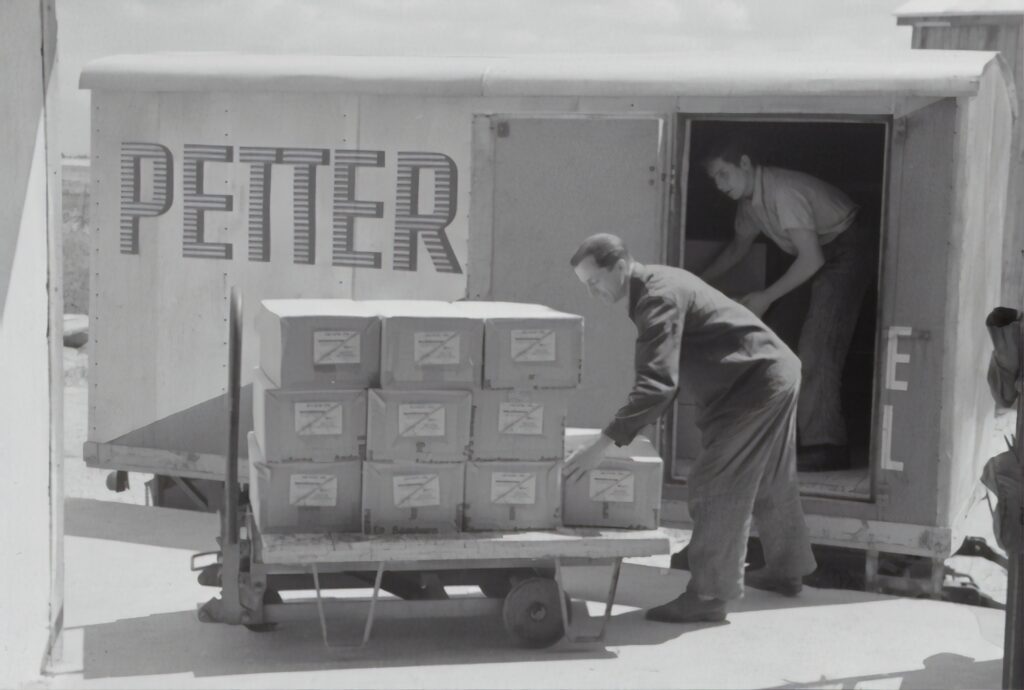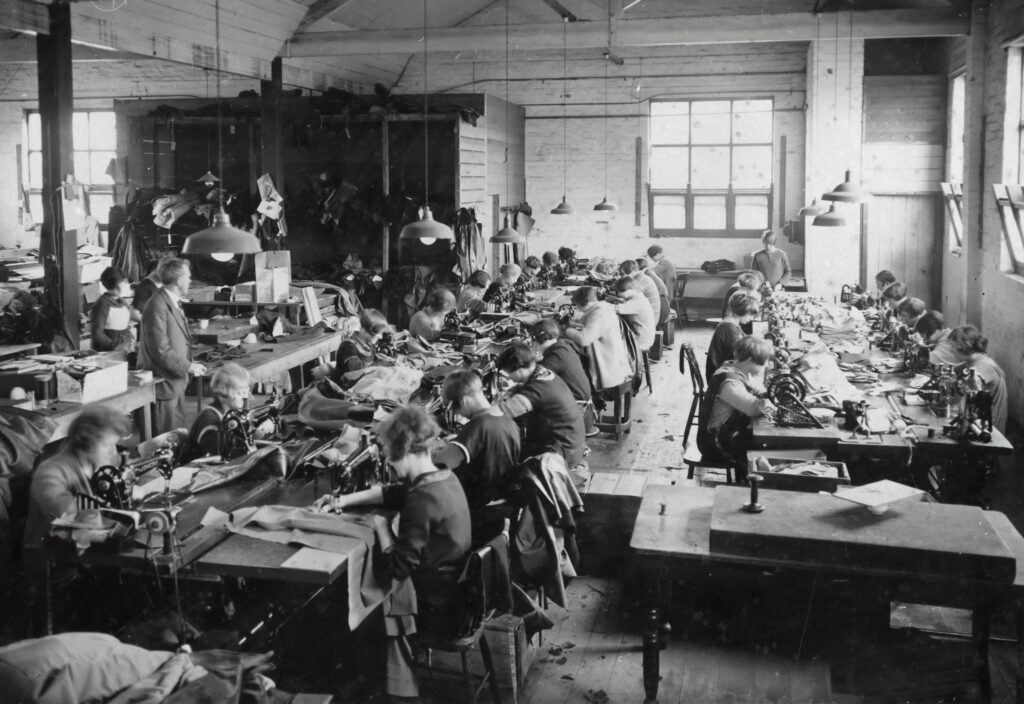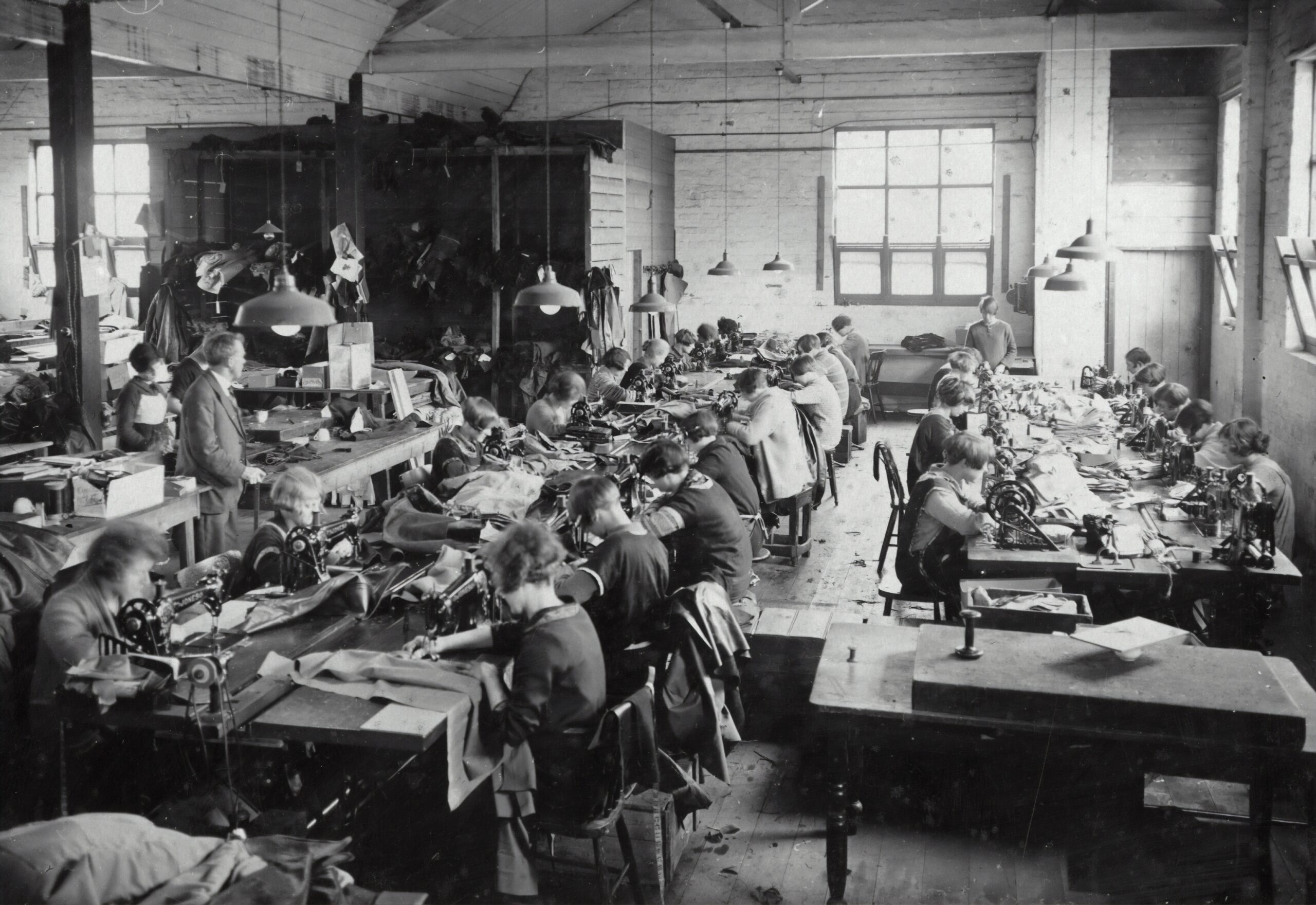Motivating your industrial workshop workforce is not a simple task, as it requires a deep understanding of the unique challenges faced by this particular group of employees. In this article, I will explore the key factors that can drive motivation in a workshop environment, such as recognizing individual achievements, fostering a sense of purpose, and providing opportunities for growth and development. By implementing these strategies, managers can create a motivated and engaged workforce that is more likely to contribute to the overall success of the organization.
Understanding the Concept of Motivation
Defining Motivation
Motivation refers to the internal and external factors that drive individuals to behave in certain ways and take specific actions to achieve their goals. It is a complex psychological process that influences behavior, performance, and overall job satisfaction. Motivation can come from various sources, such as personal values, job characteristics, and social interactions.
Importance of Employee Motivation
Employee motivation is crucial in any industrial workforce as it directly impacts productivity, job satisfaction, and overall organizational success. Motivated employees are more likely to go above and beyond their assigned tasks, display creativity and innovation, and maintain higher levels of commitment and engagement towards their work. On the other hand, low motivation can lead to absenteeism, turnover, decreased performance, and an unfavorable work environment.
The Role of Motivation in Performance
Motivation plays a significant role in determining the performance levels of industrial workers. Highly motivated individuals are more likely to set challenging goals, put in the necessary effort, and persist in the face of obstacles. When employees are motivated, they are more likely to achieve their targets and contribute to the overall success of the organization. Motivation also influences an individual’s attitude towards work, job satisfaction, and commitment to their organization.
Factors Affecting Motivation in Industrial Workforce
Physical Work Conditions
The physical work conditions, such as temperature, noise levels, and ergonomic factors, significantly affect employee motivation. Uncomfortable or hazardous working conditions can lead to stress, fatigue, and demotivation. Providing a safe and comfortable physical environment is crucial for ensuring employees’ well-being and sustaining their motivation levels.
Type of Work
The nature of the work itself significantly impacts employee motivation. Jobs that are monotonous, repetitive, or lacking in challenge and opportunities for growth can lead to boredom and reduced motivation. On the other hand, jobs that provide autonomy, variety, and a sense of purpose tend to foster higher levels of motivation. Employers should strive to offer meaningful and challenging work to their industrial workforce to enhance motivation.
Workplace Culture
The culture of the workplace plays a crucial role in determining employee motivation. A positive and supportive culture that values teamwork, collaboration, and open communication can significantly boost motivation levels. Conversely, a toxic or highly competitive culture can lead to demotivation and hinder the overall performance of the industrial workforce. Employers should strive to cultivate a positive workplace culture that fosters motivation and promotes a sense of belonging.
Work-life Balance
Another significant factor affecting employee motivation is the ability to maintain a healthy work-life balance. When employees feel overwhelmed by excessive work demands and can’t find time for personal life, their motivation may decline. Employers should strive to promote work-life balance by providing flexible work arrangements, promoting employee well-being, and encouraging employees to take breaks and vacations. A balanced lifestyle helps in sustaining motivation levels and prevents burnout.
Management Style
The leadership and management style employed within the industrial workshop also have a significant impact on employee motivation. Autocratic or micromanagement styles can stifle motivation, as employees may feel disempowered and undervalued. On the other hand, a transformational leadership approach that emphasizes employee development, coaching, and empowerment can significantly enhance motivation levels. Managers should strive to adopt leadership styles that inspire and motivate their industrial workforce.



This image is property of images.unsplash.com.
Motivation Theories Applicable to Industrial Workers
Maslow’s Hierarchy of Needs
Maslow’s Hierarchy of Needs theory proposes that individuals have different levels of needs that influence their motivation. The hierarchy includes physiological needs, safety needs, social needs, esteem needs, and self-actualization needs. In an industrial workshop, employers can address these needs by providing fair compensation, ensuring a safe work environment, promoting positive social interactions, recognizing achievements, and offering opportunities for growth and self-fulfillment.
Herzberg’s Two-Factor Theory
Herzberg’s Two-Factor Theory suggests that certain factors, called hygiene factors, can prevent dissatisfaction, while other factors, called motivators, can enhance motivation. Hygiene factors include aspects such as salary, job security, and working conditions, which, when absent or inadequate, can lead to dissatisfaction. Motivators, on the other hand, include factors like recognition, challenging work, and opportunities for growth, which can significantly boost motivation levels. Industrial employers should focus on both hygiene factors and motivators to ensure a motivated workforce.
Vroom’s Expectancy Theory
Vroom’s Expectancy Theory states that an individual’s motivation to exert effort towards a goal depends on their belief that efforts will lead to performance, performance will lead to rewards, and the rewards will be valued. In an industrial workshop, employers can enhance motivation by ensuring employees believe that their efforts will result in desired performance outcomes and that these outcomes will be valued and rewarded. Clear goal setting, performance feedback, and fair reward systems are essential elements of applying Vroom’s theory in motivating industrial workers.
Adams’ Equity Theory
Adams’ Equity Theory suggests that individuals are motivated when they perceive fairness in the workplace. According to this theory, employees compare their inputs (e.g., effort, skills) with their outcomes (e.g., rewards, recognition) and compare this ratio to that of others. If they perceive an inequity, such as feeling overworked and under-compensated compared to their peers, their motivation may be negatively affected. Employers should strive to create a fair and equitable work environment by ensuring that employees’ inputs and outcomes are aligned with their perceptions of fairness.
Identifying Types of Industrial Workers
Understanding Different Roles in an Industrial Workshop
An industrial workshop may consist of various roles, each requiring specific skills, knowledge, and responsibilities. These roles can include production workers, supervisors, maintenance personnel, quality control inspectors, and administrative staff. Understanding the unique aspects and challenges of each role is essential in devising effective motivation strategies.
Evaluating Personal Preferences and Motivation Factors for Each Role
Different roles within the industrial workshop may have different motivation factors and preferences. For example, production workers may be motivated by incentives tied to performance, while supervisors may value opportunities for professional growth and development. It is crucial for employers to evaluate the motivation factors relevant to each role and tailor their strategies accordingly to maximize motivation.
How Different Motivation Strategies Apply to Different Roles
Based on the evaluation of motivation factors for each role, employers can deploy appropriate motivation strategies. For production workers, implementing performance-based incentives or recognition programs may be effective. For supervisors, providing opportunities for leadership development or autonomy in decision-making may enhance motivation. Understanding the unique needs and preferences of each role is essential for successful motivation strategies in an industrial workshop.



This image is property of images.unsplash.com.
Communication as a Motivational Tool
Importance of Open Communication
Open communication is crucial for motivating employees in an industrial workshop. When employees feel heard, understood, and involved in decision-making processes, their motivation levels increase. Effective communication channels foster transparency, trust, and collaboration, creating a supportive work environment that enhances motivation.
How to Foster a Transparent Communication Culture
To foster a transparent communication culture, employers should establish open lines of communication at all levels of the organization. Regular team meetings, suggestion boxes, employee surveys, and one-on-one conversations can promote open dialogue. Employers should actively listen to employee feedback, address concerns promptly, and provide regular updates to ensure transparency and maintain motivation levels.
Use of Feedback in Boosting Motivation
Regular feedback is a powerful motivational tool in an industrial workshop. Constructive feedback helps employees understand their performance, identify areas for improvement, and reinforces their strengths. Additionally, recognizing and rewarding employee achievements through positive feedback boosts motivation. Providing timely and specific feedback is essential for maintaining employee motivation and fostering continuous improvement.
The Role of Leadership in Employee Motivation
Leadership Styles and Their Impact on Motivation
Leadership styles can significantly impact employee motivation. Transformational leaders who inspire, motivate, and empower their employees tend to create a highly motivated workforce. On the other hand, leaders who adopt autocratic or laissez-faire styles may hinder motivation. Employers should understand the different leadership styles and their potential impact on motivation to effectively lead their industrial workshop.
The Role of a Leader in Modeling Behavior
Leaders play a crucial role in modeling desired behavior and setting the tone for the workplace. A leader who demonstrates a strong work ethic, positive attitude, and commitment to the organization motivates employees to follow suit. Leaders should lead by example, exhibit the desired values and behaviors, and consistently communicate and reinforce the importance of motivation in achieving organizational goals.
Leadership Communication and Employee Motivation
Effective leadership communication is central to fostering employee motivation. Leaders should communicate organizational goals, expectations, and performance feedback clearly and consistently. Emphasizing the importance of employee contributions, providing regular updates on progress, and recognizing achievements through effective communication strengthens motivation levels. Leaders should also create opportunities for open dialogue and encourage employee input, ensuring that communication channels remain two-way.



This image is property of images.unsplash.com.
Creating a Reward and Recognition System
Understanding the Link Between Reward and Motivation
Rewards and recognition have a direct impact on employee motivation. When employees feel valued, appreciated, and appropriately rewarded for their efforts, their motivation levels increase. Rewards can be intrinsically or extrinsically motivated, such as monetary incentives, public recognition, or opportunities for career advancement. Employers should understand the link between rewards and motivation and design a comprehensive reward and recognition system.
Types of Rewards
There are various types of rewards that can motivate the industrial workforce. Monetary rewards, such as bonuses or salary increments, are commonly used. However, non-financial rewards, such as certificates of achievement, flexible work hours, or additional vacation days, can also be effective in enhancing motivation. It is essential to offer a mix of intrinsic and extrinsic rewards to cater to the diverse needs and preferences of employees.
Implementing a Fair and Motivating Recognition System
To implement a fair and motivating recognition system, employers should ensure that rewards are distributed objectively and transparently. Reward criteria should be clearly communicated, and employees should have a fair chance to demonstrate their abilities and contributions. Employers can also involve employees in the reward system design process to promote a sense of ownership and fairness. Regularly evaluating the effectiveness of the recognition system and making necessary adjustments is also crucial for sustaining motivation.
Fostering a Positive Work Environment
Creating a Safe and Comfortable Physical Environment
A safe and comfortable physical environment is essential for fostering a positive work environment and enhancing motivation. Employers should ensure that industrial workshops comply with health and safety regulations, provide necessary protective equipment, and maintain clean and organized workspaces. Additionally, providing amenities like break rooms, comfortable seating, and proper lighting can contribute to employee well-being and motivation.
Promoting Positive Interactions Among Employees
Promoting positive interactions among employees is crucial for sustaining motivation levels. Employers should encourage teamwork, collaboration, and mutual support through team-building activities, cross-functional projects, and regular social events. Building a sense of camaraderie and a positive work culture fosters motivation and creates a supportive environment where employees thrive.
Managing Conflicts and its Role in Motivation
Conflicts can significantly impact employee motivation if left unresolved. Employers should have effective conflict resolution mechanisms in place to address conflicts promptly and fairly. By promoting open communication, active listening, and mediation, employers can prevent conflicts from escalating and maintain a harmonious work environment that sustains motivation.



This image is property of images.unsplash.com.
Training and Development Opportunities
Role of Learning in Employee Motivation
Learning and development opportunities play a crucial role in employee motivation. Providing industrial workers with training programs, skill enhancement workshops, and opportunities for career advancement shows a commitment to their growth and development. When employees feel that their organization invests in their learning, they are motivated to perform better and pursue further growth opportunities.
Types of Training Opportunities
The types of training opportunities offered to industrial workers depend on their roles, skill sets, and organizational objectives. Technical training, safety training, leadership development programs, and cross-functional training are some examples of training options. Offering diverse training opportunities ensures that employees can acquire new skills, expand their knowledge, and remain motivated to perform at their best.
How Continuous Learning Contributes to Motivation
Continuous learning contributes to employee motivation by fostering a growth mindset and providing new challenges and opportunities. When employees have access to ongoing learning resources, they feel engaged and motivated to enhance their skills and knowledge. Continuous learning prevents stagnation and helps employees adapt to changing work environments, leading to increased motivation and performance.
Tracking and Evaluating Employee Motivation
Methods for Measuring Employee Motivation Level
Tracking and evaluating employee motivation levels is essential to gauge the effectiveness of motivation strategies. Methods for measuring employee motivation include surveys, interviews, focus groups, and performance evaluations. These methods provide valuable insights into the factors that drive or hinder motivation and help employers make informed decisions to sustain and enhance motivation levels.
Evaluating the Effectiveness of Motivation Strategies
To evaluate the effectiveness of motivation strategies, employers should regularly review key performance indicators, such as productivity, job satisfaction, and retention rates. Comparing these metrics before and after implementing motivation strategies can indicate their impact. Employee feedback and engagement levels should also be considered when evaluating the effectiveness of motivation strategies.
Continuous Improvement of Motivation Techniques
Motivation techniques should be subject to continuous improvement based on the feedback and evaluation results. Employers should actively seek employee input and adapt their motivation strategies to address any shortcomings or changing needs. By continuously refining motivation techniques, employers can ensure that their industrial workshop workforce remains engaged, committed, and motivated to achieve organizational goals.
In conclusion, understanding and effectively applying motivation strategies is crucial for nurturing a motivated industrial workshop workforce. By considering factors such as work conditions, job roles, communication, leadership, rewards, work environment, training opportunities, and evaluation, employers can create a conducive environment that enhances motivation levels. This, in turn, leads to increased productivity, job satisfaction, and overall organizational success. Continuous improvement and adaptation of motivation techniques ensure a sustained and highly motivated industrial workforce.



This image is property of images.unsplash.com.
